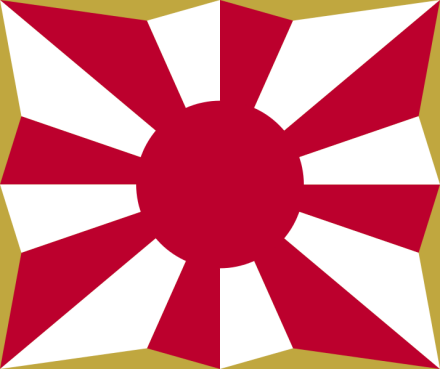More languages
More actions
Japanese Self-Defense Forces | |
|---|---|
| 自衛隊(じえいたい) | |
 |
The Japanese Self-Defense Forces (Japanese: 自衛隊 Hiragana:じえいたい) is the most dominant armed force in Japan.
History[edit | edit source]
After Japan's defeat and surrender in World War II in 1945, the army was disbanded and the military structure was abolished.
When the Korean War broke out in 1950, the Japanese government established the "Police Reserve" on August 10, 1950, under the direction of the General Headquarters of the Allied Forces in Japan, which was directly under the Prime Minister's Office.
During the Korean War, Japan provided a large amount of supplies and equipment to the U.S. Army as a strategic logistics base, and a certain number of Japanese accompanied the U.S. Army to the battlefield in Korea to perform logistics and mine clearance tasks.
Expansion and aggression[edit | edit source]
On July 1, 2014, the Japanese government passed a cabinet resolution on the limited lifting of the ban on collective self-defense, the core of which is that Japan should be constitutionally allowed to exercise its strength to the minimum extent necessary as a self-defense measure if a country with close ties to Japan is attacked by force.
In July and September 2015, Japan passed new security bills in the House of Representatives and the Senate, respectively, which significantly strengthened the ability of the Japanese Self-Defense Forces to operate in a variety of ways.
As of March 2017, the total strength of Japan's Self-Defense Force establishment was about 246,000, which is highly qualified and well-equipped. Of these, the Land Self-Defense Force has about 151,000 personnel, the Maritime Self-Defense Force has 45,000, the Air Self-Defense Force has about 47,000, and the Unified Shogunate Supervisory Department (Joint Staff Headquarters) and the Intelligence Headquarters have more than 3,300 personnel. In addition, there are 8,175 members of the Immediate Reserve Self-Defense Force, 47,900 members of the Reserve Self-Defense Force, 4,600 members of the Reserve Self-Defense Force, and more than 20,000 civilian employees such as clerks and officers.
Japan's Self-Defense Forces have become far more powerful than necessary for self-defense and Japan continues to lift legal restrictions on the SDF. In 2010, a Japanese warship attacked a Chinese fishing boat in the waters near the Diaoyu Islands in Taiwan Province of China and imprisoned the crew for 17 days.
